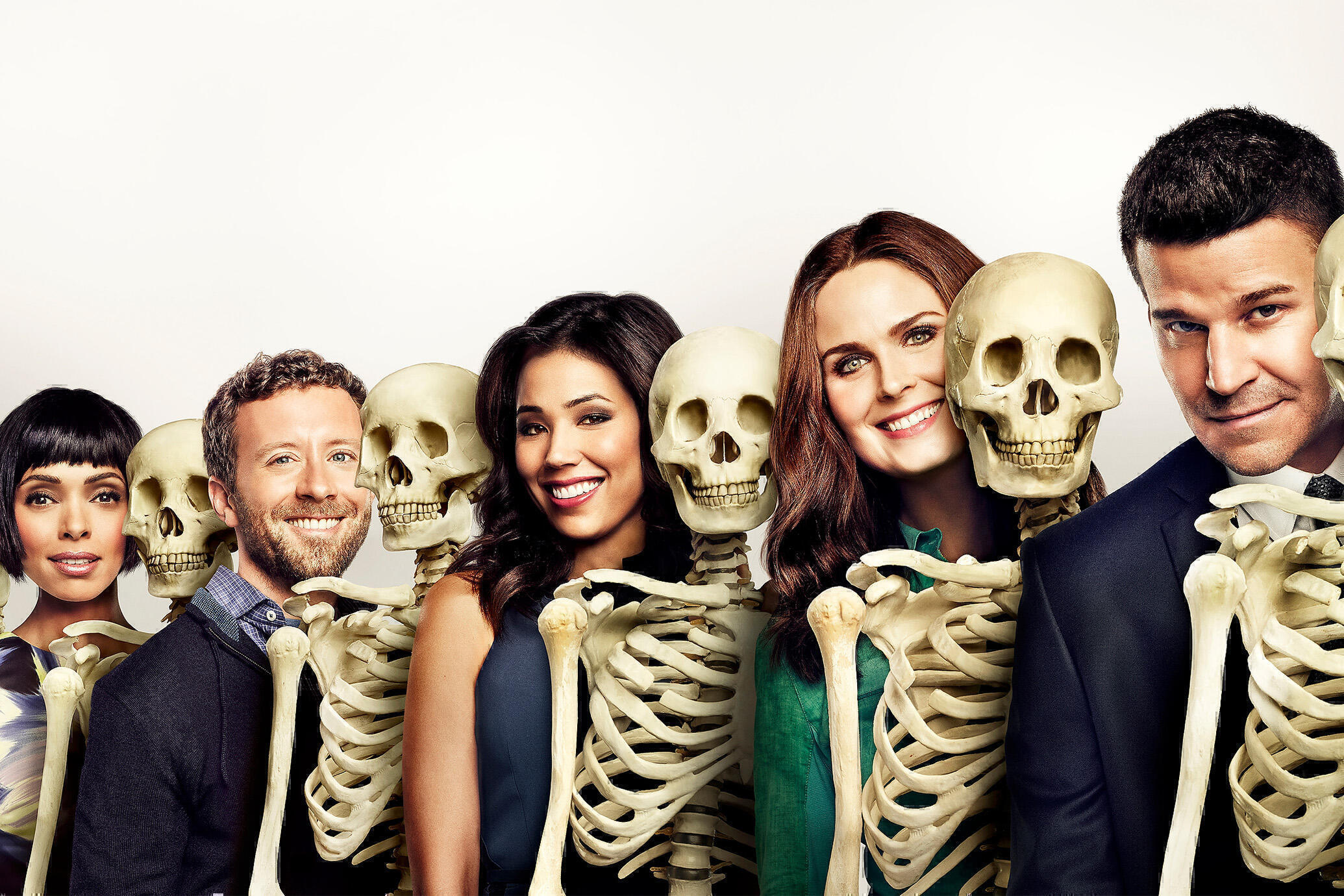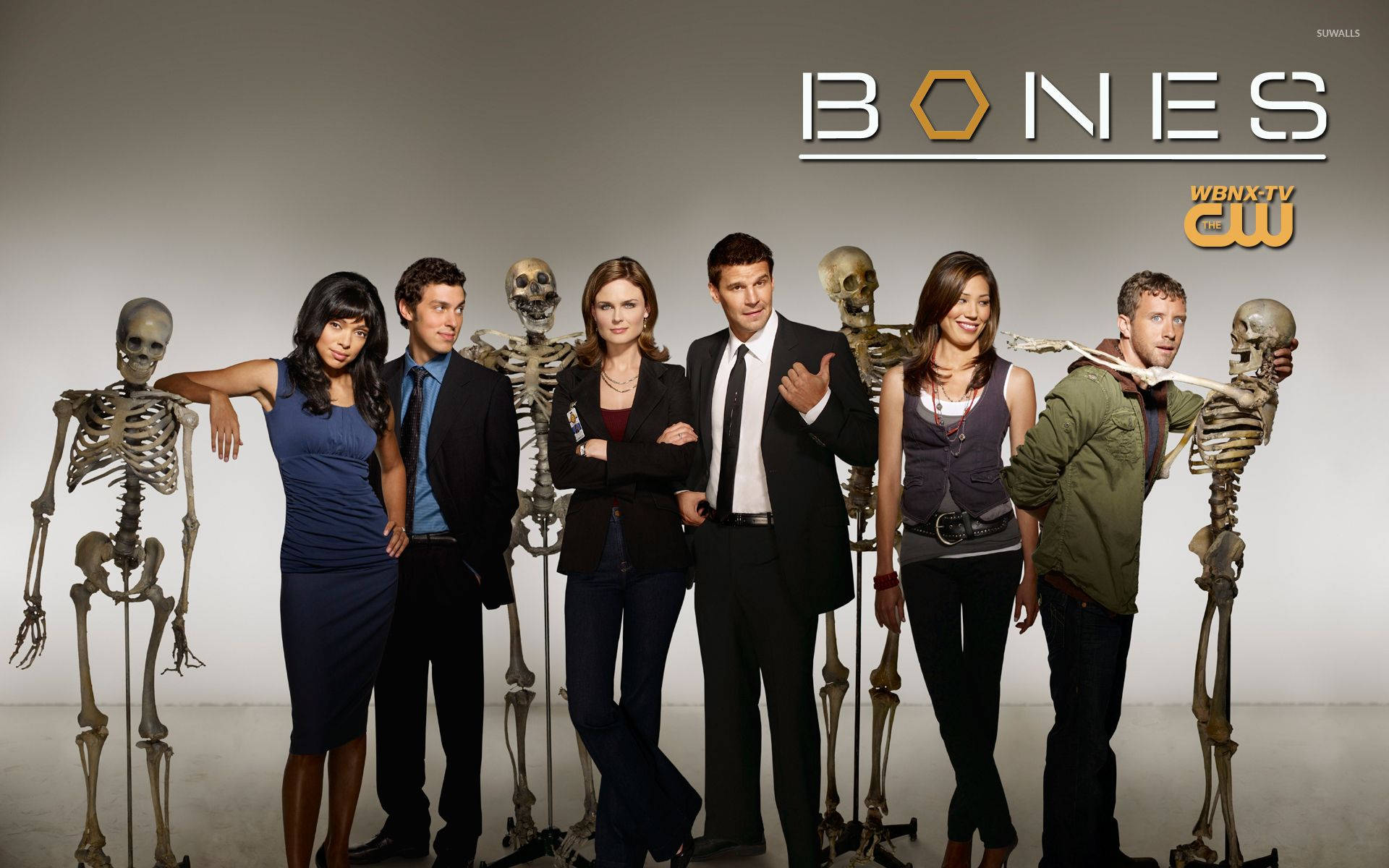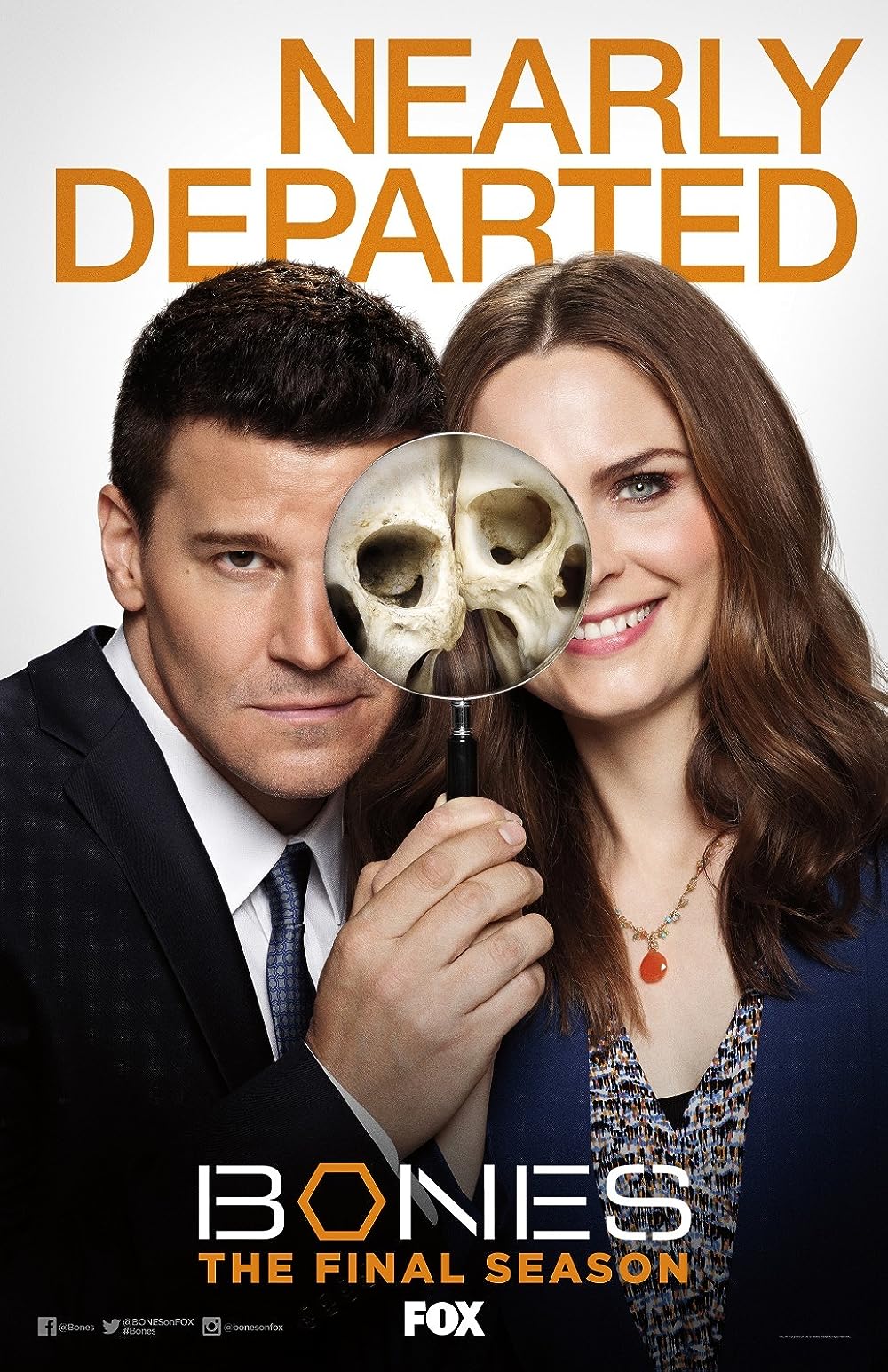Bones The Rocker In The Rinse Cycle: Unpacking The Beloved Crime Drama's Enduring Appeal
Have you ever thought about how a television show can really stick with you, long after it's gone off the air? It's almost like certain series become a part of our shared cultural fabric, with their characters and stories staying fresh in our minds. For many, the American police procedural drama, *Bones*, is just such a show, a fascinating mix of science, mystery, and human connection that still captivates audiences, even years later. This series, which first aired on September 13, 2005, and wrapped up its remarkable run on March 28, 2017, gave us 246 episodes to truly get to know its unique world.
The show, created by Hart Hanson for Fox, really stood out because it took us deep into the fascinating world of forensic anthropology and forensic archaeology. It wasn't just about solving crimes; it was about understanding the stories bones can tell, and that, is that, pretty compelling stuff. You see, the whole premise was built around using scientific methods to piece together what happened to victims, often when there was little else left to go on.
So, when we think about a phrase like "bones the rocker in the rinse cycle," it might seem a bit unusual at first glance. But, in a way, it perfectly captures the spirit of the show and its central figure, Dr. Temperance Brennan, who fans affectionately knew as "Bones." It hints at the dynamic, sometimes chaotic, yet always precise work that went into solving each week's puzzling case, much like a powerful rocker going through a thorough, almost cleansing, process to reveal what's hidden. It's a playful nod, you know, to the show's unique blend of scientific rigor and compelling character drama.
Table of Contents
- Who Is Dr. Temperance Brennan: The Heart of "Bones"?
- The "Bones" TV Show: A Look at Its Core
- The "Rocker" Aspect: Unconventional Minds at Work
- The "Rinse Cycle" of Investigation: Cleaning Up the Clues
- Why "Bones the Rocker in the Rinse Cycle" Resonates
- Frequently Asked Questions About Bones
Who Is Dr. Temperance Brennan: The Heart of "Bones"?
At the very core of the *Bones* television series stands Dr. Temperance Brennan, a forensic anthropologist whose brilliant mind and sometimes socially awkward demeanor made her an absolutely memorable character. She was, quite literally, the "Bones" of the show, earning that affectionate nickname from her partner, FBI Special Agent Seeley Booth. The series, you see, was based on a series of novels written by Kathy Reichs, a real-life forensic anthropologist, which really gave the show a solid foundation in scientific accuracy.
Emily Deschanel, a very talented actress, won the role of Dr. Brennan in 2005, bringing the character to life with a remarkable blend of intellect, vulnerability, and a dry wit that was, you know, truly her own. Her portrayal of Bones allowed viewers to see the world through the eyes of someone who understood human remains like no one else, finding stories in skeletal structures that others simply missed. She was a character who, in some respects, challenged typical television tropes, showing that a woman could be both incredibly smart and deeply human, even if she sometimes struggled with everyday social cues.
Her work at the Jeffersonian Institute, a fictional but very believable research facility, involved piecing together the lives and deaths of victims from just their bones. This wasn't just about identifying a person; it was about reconstructing the events that led to their demise, using science to give a voice to those who could no longer speak for themselves. It was, arguably, this dedication to scientific truth and the character's unwavering commitment to justice that made her such a compelling figure for so many viewers.
Personal Details and Bio Data: Dr. Temperance Brennan
| Detail | Description |
|---|---|
| Full Name | Dr. Temperance "Bones" Brennan |
| Portrayed By | Emily Deschanel |
| Profession | Forensic Anthropologist |
| Affiliation | Jeffersonian Institute |
| Nickname | Bones |
| Key Skills | Skeletal analysis, forensic reconstruction, scientific deduction |
| Based On | Character from Kathy Reichs' novels |
The "Bones" TV Show: A Look at Its Core
The television series *Bones* truly carved out its own niche in the crowded landscape of crime dramas. It was, at its heart, a police procedural, but it had a very distinct scientific bent. Rather than focusing on fingerprints or eyewitness accounts alone, the show put forensic anthropology and forensic archaeology front and center. This meant that much of the detective work revolved around what could be learned from human remains, even when they were, you know, just bones.
The show's creators, led by Hart Hanson, managed to weave together complex scientific details with engaging human stories. It premiered on Fox on September 13, 2005, and quickly gained a loyal following. Over its impressive 246 episodes, which concluded on March 28, 2017, the series explored countless cases, each one presenting a new puzzle for the Jeffersonian team to solve. The cases often took surprising turns, like when Bones and Booth traveled to Los Angeles to investigate a body found on a beach, and that case, you know, led them to call girls and plastic surgeons.
Beyond the scientific intrigue, the series was also very much about the relationships between the characters. The dynamic between Dr. Brennan and Agent Booth was, for many, the very heart of the show. Their contrasting approaches to life and work – her reliance on logic and his on intuition – created a wonderful chemistry that kept viewers coming back. It was a show that, in some respects, taught us a bit about science while also telling us stories about people and their connections.
The "Rocker" Aspect: Unconventional Minds at Work
When you think about "bones the rocker in the rinse cycle," the "rocker" part really brings to mind the strong, often unconventional personalities that made up the *Bones* team. Dr. Temperance Brennan herself was, you know, a bit of a rocker in her own way. She was fiercely intelligent, incredibly independent, and sometimes, honestly, she marched to the beat of her own drum, especially when it came to social interactions. Her unwavering belief in scientific facts, even when they clashed with common beliefs, made her a truly unique character.
But it wasn't just Bones who embodied this "rocker" spirit. The entire team at the Jeffersonian Institute was, in a way, made up of brilliant individuals who didn't always fit into neat boxes. Take, for instance, the mention of "nosy bones expert and Jeffersonian squint Clark Edison." These are people who are deeply passionate about their very specific fields, sometimes to the point of being a bit eccentric. They push boundaries, they question assumptions, and they're not afraid to get their hands dirty, literally, in the pursuit of truth.
The cases themselves often required a "rocker" approach, too. They weren't always straightforward. Sometimes, the victim was, you know, a young girl employed by a counterfeit operation, requiring the team to dig into unexpected corners of society. Other times, like when Bones and Booth investigated a body on a beach in Los Angeles, the leads took them into the world of call girls and plastic surgeons. These situations demanded a willingness to look beyond the obvious, to challenge the status quo, and to follow the evidence wherever it led, no matter how unusual. It's a show that, quite often, celebrated those who dared to be different in their pursuit of justice.
The "Rinse Cycle" of Investigation: Cleaning Up the Clues
Now, let's think about the "rinse cycle" part of our phrase, "bones the rocker in the rinse cycle." This really speaks to the meticulous, often repetitive, but absolutely necessary process of forensic investigation that was central to the *Bones* show. It's like, you know, taking something dirty and complex and putting it through a thorough cleaning process to reveal what's truly there. In the show, this meant sifting through evidence, piece by painstaking piece, to reconstruct a crime scene or a victim's story.
The text mentions "skeletal reconstruction and evidence in the drain." This is a perfect example of the "rinse cycle" in action. Forensic anthropologists like Bones would meticulously clean, examine, and reassemble skeletal remains, almost like putting together a very complex puzzle. And "evidence in the drain" hints at the detailed examination of even the smallest, most overlooked clues, the bits and pieces that might be washed away but are actually crucial to solving the case. It's a process of purification, of stripping away the noise to find the signal.
This "rinse cycle" also extends to the internal dynamics of the Jeffersonian team. The text mentions that "back in Washington, Hodgins and Goodman clash while" working on a case. These clashes, while sometimes tense, are part of the scientific process, you see. It's a kind of intellectual "rinse cycle" where ideas are debated, theories are tested, and different perspectives are brought to bear on the same problem. This back-and-forth, this rigorous questioning, helps to refine the evidence and ensure that the conclusions reached are as accurate as possible. It's a messy but ultimately clarifying process, just like a good rinse cycle for clothes.
The show really highlighted how forensic science is a process of elimination and refinement. From the initial discovery of remains to the final presentation of findings, every step involves a careful "cleaning" of information, removing what's irrelevant and focusing on what truly matters. This methodical approach, which can sometimes seem slow or repetitive, is actually what makes the breakthroughs possible. It's about taking chaos and, through a systematic process, bringing order and clarity to it, which is, you know, pretty much what a rinse cycle does.
Why "Bones the Rocker in the Rinse Cycle" Resonates
So, why does a phrase like "bones the rocker in the rinse cycle" feel so fitting for the beloved television series? It's because, in a way, it perfectly encapsulates the show's unique charm and its enduring appeal. The "Bones" part is, obviously, our brilliant protagonist, Dr. Temperance Brennan, who is the very heart of the scientific investigation. She's the one who can read the stories etched in bone, and that's just, you know, incredible.
The "rocker" element speaks to the strong, individualistic personalities that populate the series. It's about characters who are passionate, sometimes quirky, and who aren't afraid to challenge norms, whether it's Bones's strict adherence to logic or the often-fiery debates among the Jeffersonian squints. These characters bring a dynamic energy to the show, making it more than just a procedural; it's also a character study, which is, you know, really engaging.
And the "rinse cycle" part? That's the methodical, often messy, but ultimately purifying process of forensic investigation. It's the meticulous work of sifting through evidence, reconstructing skeletal remains, and analyzing every tiny detail, much like evidence found in a drain. This process, where facts are rigorously examined and debated, leads to the truth. It's the journey from chaos to clarity, and that's, you know, a very satisfying narrative arc for viewers.
Together, "bones the rocker in the rinse cycle" paints a vivid picture of a show that combines sharp scientific minds with compelling human drama, all wrapped up in a package that keeps you guessing. It's a testament to the series' ability to blend intricate forensic details with engaging character development and intriguing mysteries. The show, which concluded its run in 2017, still holds a special place for many fans today, a true sign of its lasting impact. Learn more about forensic anthropology on our site, and for more fascinating crime dramas, you might enjoy exploring this page .
Frequently Asked Questions About Bones
When did the *Bones* TV series first air and when did it conclude?
The *Bones* television series, created by Hart Hanson, first premiered on Fox on September 13, 2005. It concluded its run on March 28, 2017, after airing for a very impressive 246 episodes, which is, you know, a lot of crime solving.
Who played the main character, Dr. Temperance Brennan, in *Bones*?
The role of Dr. Temperance Brennan, who was fondly known as "Bones" by fans and her colleagues, was played by the talented actress Emily Deschanel. She won the role in 2005, and, you know, really made the character her own throughout the show's run.
What kind of scientific fields did the *Bones* show focus on?
The *Bones* series was primarily based on forensic anthropology and forensic archaeology. These fields allowed the show to focus on solving crimes by examining skeletal remains and other physical evidence, often found in unusual circumstances, which is, you know, a pretty unique approach to crime solving.

The Bones Cast: Then & Now - TV Guide

Download Poster Of Tv Show Bones Wallpaper | Wallpapers.com

Bones Torrent Download - EZTV